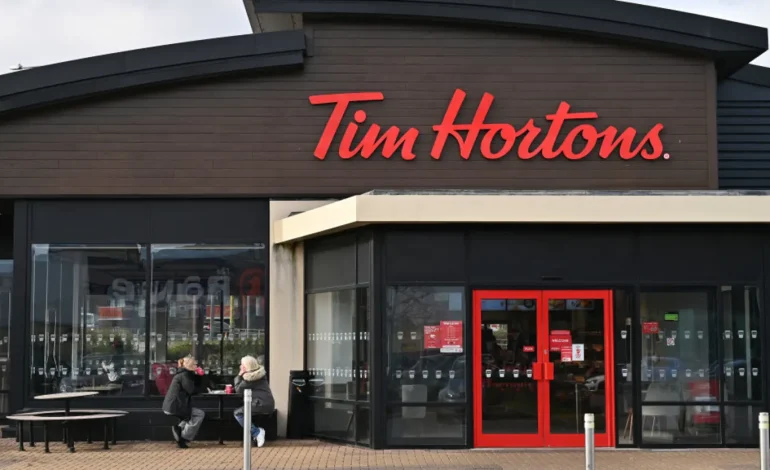Tim Hortons and Overseas Momentum Push Restaurant Brands Past Wall Street Targets

CNBC, Reuters, and the Financial Times contributed to this report.
Restaurant Brands International served up a solid quarter, topping expectations on both profit and sales as Tim Hortons and the company’s international arm did most of the heavy lifting. The parent of Burger King, Popeyes, Tim Hortons and Firehouse Subs said adjusted earnings landed at $1.03 per share versus the $1.00 analysts were looking for, while revenue rose 6.9% to $2.45 billion, ahead of the $2.4 billion consensus. Shares climbed about 3% in premarket trading.
Management’s message was straightforward: the growth engine right now is Tim Hortons plus the international business, which together account for roughly 70% of earnings. Companywide same-store sales grew 4%, but it was the international segment that stole the show with 6.5% comp growth, comfortably above the 4.4% many on the Street had penciled in. That strength reflects resilient traffic abroad and menu and value moves tailored to price-sensitive consumers.
Tim Hortons kept the momentum going with 4.2% same-store sales growth. The Canadian coffee chain has leaned harder into food — think breakfast sandwiches and hot bakery items — to drive check and traffic beyond the morning caffeine run. It’s a strategy that’s helped the brand stay sticky even as household budgets get tighter.
Burger King also notched a respectable quarter, with comps up 3.1%. In the US, the chain’s turnaround plan continues to show up in the numbers: more remodels, cleaner operations, and marketing that keeps the Whopper front and center. Value plays have helped draw in cost-conscious diners without leaning too far into margin-draining discounting.
The soft spot was Popeyes. Same-store sales fell 2.4% as the chicken wars shifted from hype to value, and competitors turned up the pressure with aggressive deals. Popeyes hasn’t lost its brand heat, but it’s facing a tougher battleground for budget-minded customers and will need sharper promotions and operational consistency to re-ignite growth.
Under the hood, the quarter looked healthy. Net income rose to $315 million (96 cents per share) from $252 million (79 cents) a year ago, and adjusted EPS of $1.03 reflected cleaner underlying performance once one-offs were stripped out. System-wide sales increased 6.9%, powered by a 12%-plus lift internationally, and the company reiterated it’s on track for at least 8% organic adjusted operating income growth this year.
The consumer backdrop remains mixed — traffic is gravitating to value across quick service — and RBI is leaning into that reality rather than fighting it. The playbook is clear: keep Tim Hortons’ food expansion rolling, maintain Burger King’s US renovation and core-menu focus, and get Popeyes back on offense with value that doesn’t sacrifice brand equity. If international demand holds up and the US value wars stay rational, there’s room for the beat-and-raise cadence investors want to see heading into 2026.









The latest news in your social feeds
Subscribe to our social media platforms to stay tuned